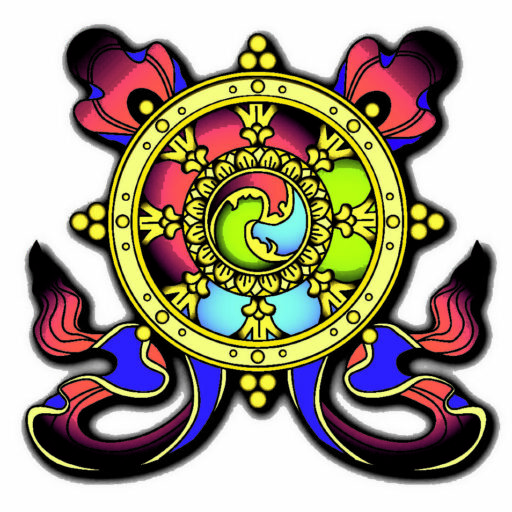by Ven Anna Goldstein
“Anger is the ultimate destroyer of your own peace of mind.”
His Holiness the XIVth Dalai Lama of Tibet
For many people anger or any of its siblings – frustration, impatience, annoyance and irritation, exasperation or touchiness – represent giant hurdles to sustaining any form of peace and happiness.
Tibetan Buddhism offers a myriad of tools and techniques to create more happiness and reduce suffering in ours and others’ lives.
One of the most accessible and clear practices is how to deal with anger by developing patience. Learning how to develop more patience can potentially bring some quick relief and significant results.
Why anger brings so much pain
Anger dramatically disturbs our mind leading to stress and agitation. It impacts how we look and appear to the world; it is hurtful to ourselves and others.
People often shun consistently angry and irritable people. Anger can send an everyday situation out of control, like a wildfire, causing havoc and destruction in its wake. Anger destroys peace and harmony – in the workplace, in the family or amongst people we thought were friends, if we perceive they have done us harm.
When our mind is saturated by anger, frustration, or impatience, our thinking and perceptions are distorted, and we tend to exaggerate. Even the smallest of hindrances and irritations can seem as big as Mount Everest.
Everything is someone else’s fault!
We can build a dark picture of people we are angry with – their general unattractiveness, poor motivation and hurtful words, until they no longer have a shred of redeeming qualities, and everything is their fault!

This distorted thinking blocks our clarity and rational capacity to work out how to address problems and resolve issues with other people.
While anger dominates our mind we may wish to bring harm to the object of our ire. Sadly, many people do harm others through anger and act in ways they would not dream of when their mind is settled.
From a Buddhist perspective Shakyamuni Buddha said anger creates the heaviest negative karma because of the amount of pain and suffering it can cause. Even a mental wish to harm creates negative karma, destroys our peace and reinforces the habit of having an agitated, negative and angry mind.
The causes of anger
According to the great Tibetan scholar and meditator, Venerable Geshe Acharya Thubten Loden, anger can arise when we feel ‘me’ or ‘mine’ is threatened in some way. For example, when:
- we feel insulted, not given the respect we believe we deserve, or when our friends and family are criticised (“your father is a liar”), we are treated unfairly at work, or if our view of self is undermined,
- when our property is damaged or stolen, or
- when our beliefs or things we identify with are challenged, like our community, background or political opinions. All these perceived or actual threats can lead to anger.
Patience is a much happier place
In Path to Enlightenment in Tibetan Buddhism Geshe Loden says that the mind of patience – the opponent of anger – guards our mind from being disturbed from any harm or difficulty.
Patience is a completely different mind that is peaceful and helpful to one’s own experience and approach to life. It does not mean relinquishing the situation or not dealing with it. But we need a peaceful, spacious mind to think through the issues and find skilful methods for solutions, or if they are minor, let them go.

The various types of patience taught by Geshe Loden in the Path to Enlightenment series include:
The patience of remaining indifferent to the harm inflicted by others and not immediately seeking to retaliate, instead being skilful and aiming for peaceful resolutions.
The patience of voluntarily enduring suffering where we recognise the source of our suffering is our negative karma and recognise this opportunity to get rid of it. This is especially useful when we are unwell or facing situations we can’t change or might need to endure, e.g. a death in the family and grief.
The patience of thinking about the Dharma – is to recognise the value of our meditation and study to transform our mind into more peaceful and patient states.
How to practice patience
Remind yourself again and again of the benefits of patience and the faults of anger for inspiration to engage in the practice of patience.
We can work at cultivating patience with the people and situations we interact with during the day. We can think that the person causing us grief, just like us, is bound by negative minds, by habituated responses.
We can rely on the thought ‘Nobody wants suffering, so I should not hurt others. Nor should I retaliate to harm because it is the nature of living beings to be confused and have conflict and have negative imprints.’
Other tools
Also consider impermanence and love. The mind is impermanent. It is not permanently angry or permanently anything. Love is the wish for others to be happy. Our anger can never achieve that.
Remember the numerous kindnesses of other living beings. Even those who are causing us problems are very kind. Without them it is impossible to develop patience. His Holiness the Dalai Lama and all great teachers say repeatedly – that people seemingly causing us difficulties can be regarded as our best friends.
The real enemy is the negative mind of anger. While anger and other delusions are only completely extinguished after the realisation of emptiness, when the negative mind of anger subsides we can begin to mature the minds of peace, happiness, joy, love and compassion.
Source – the teaching of Venerable Geshe Acharya Thubten Loden and especially his extraordinary authoritative text, Path to Enlightenment in Tibetan Buddhism. To learn more about overcoming anger, and meditations to support that goal, you may like to join our Sunday classes.
